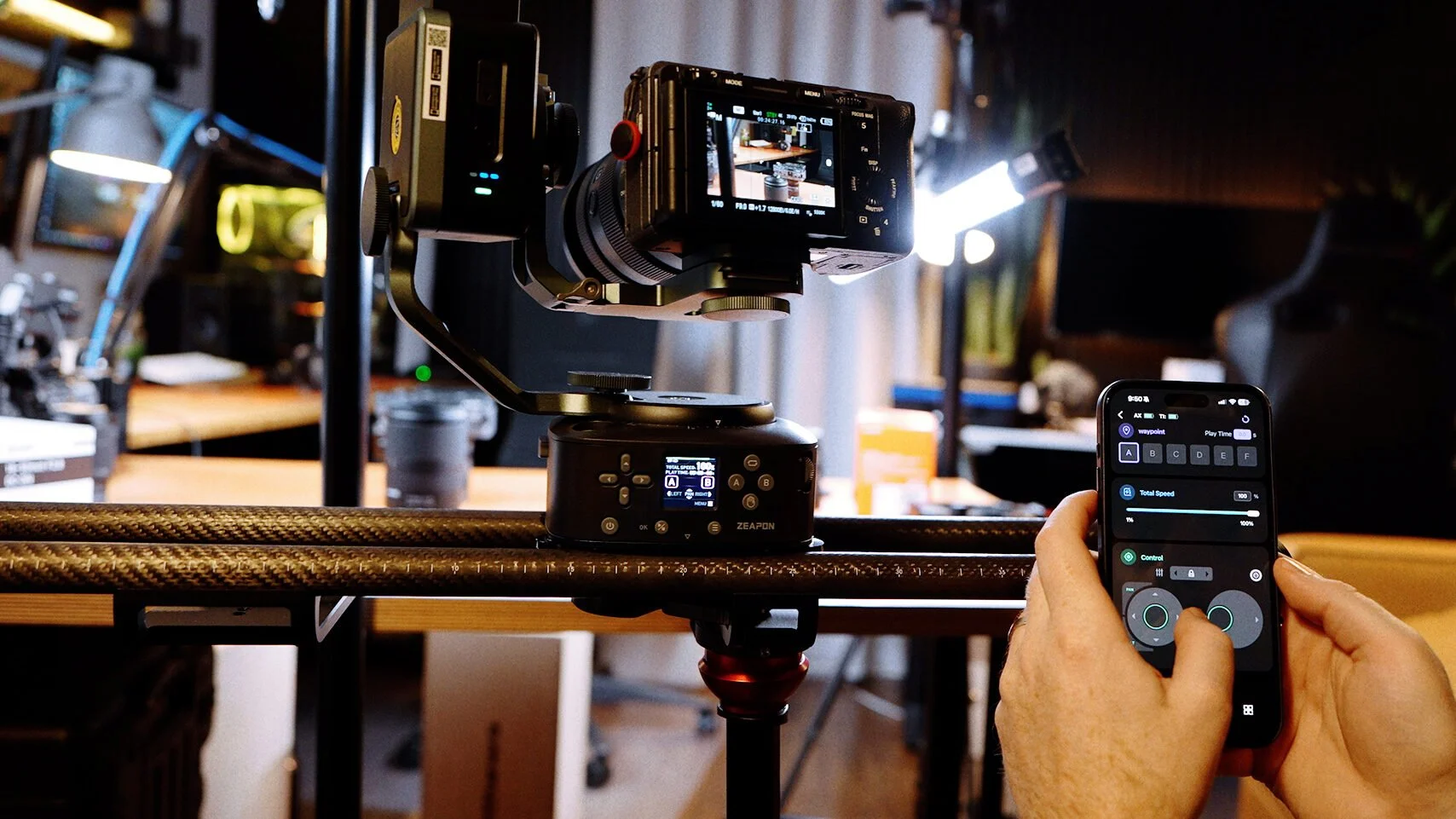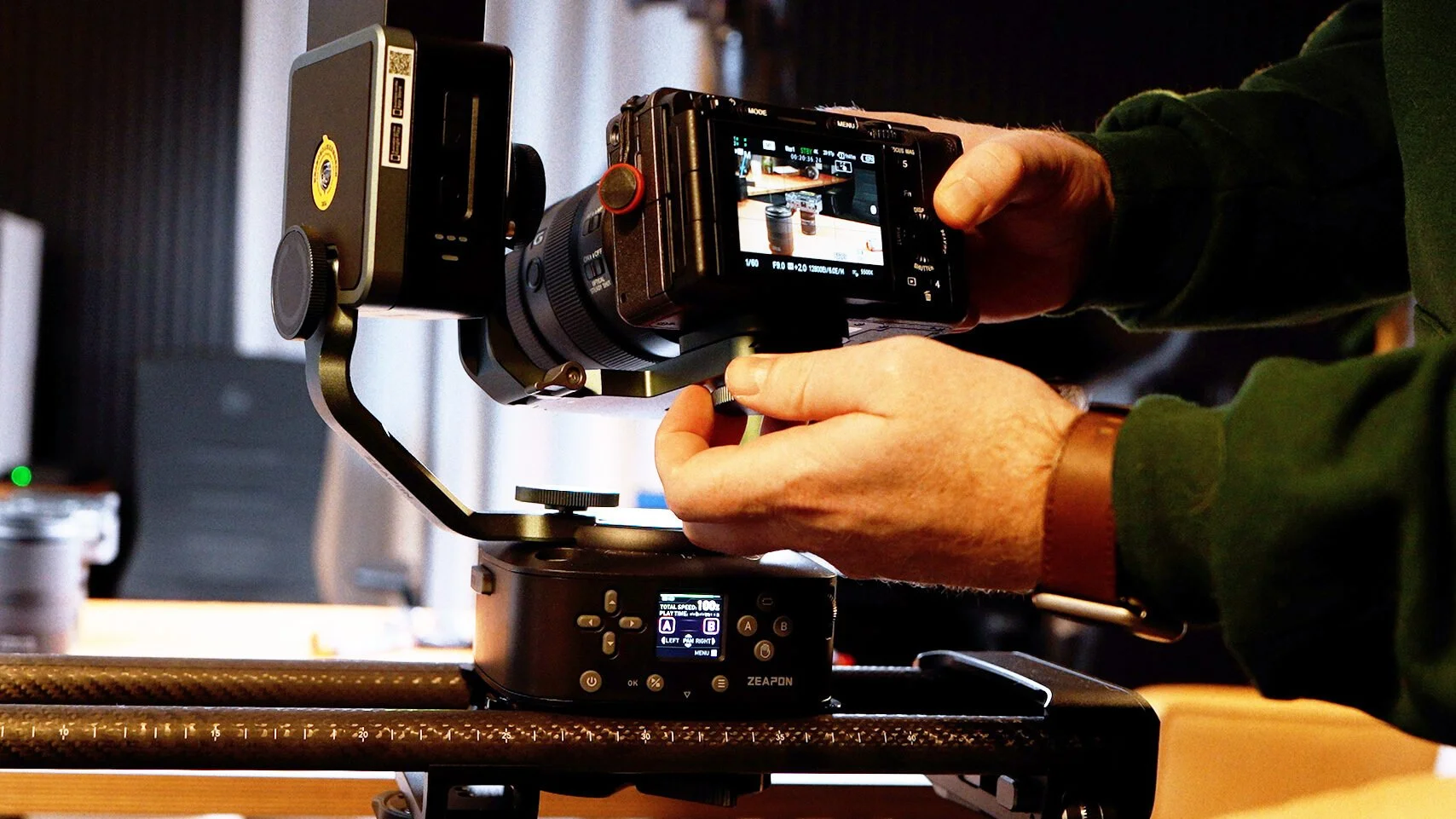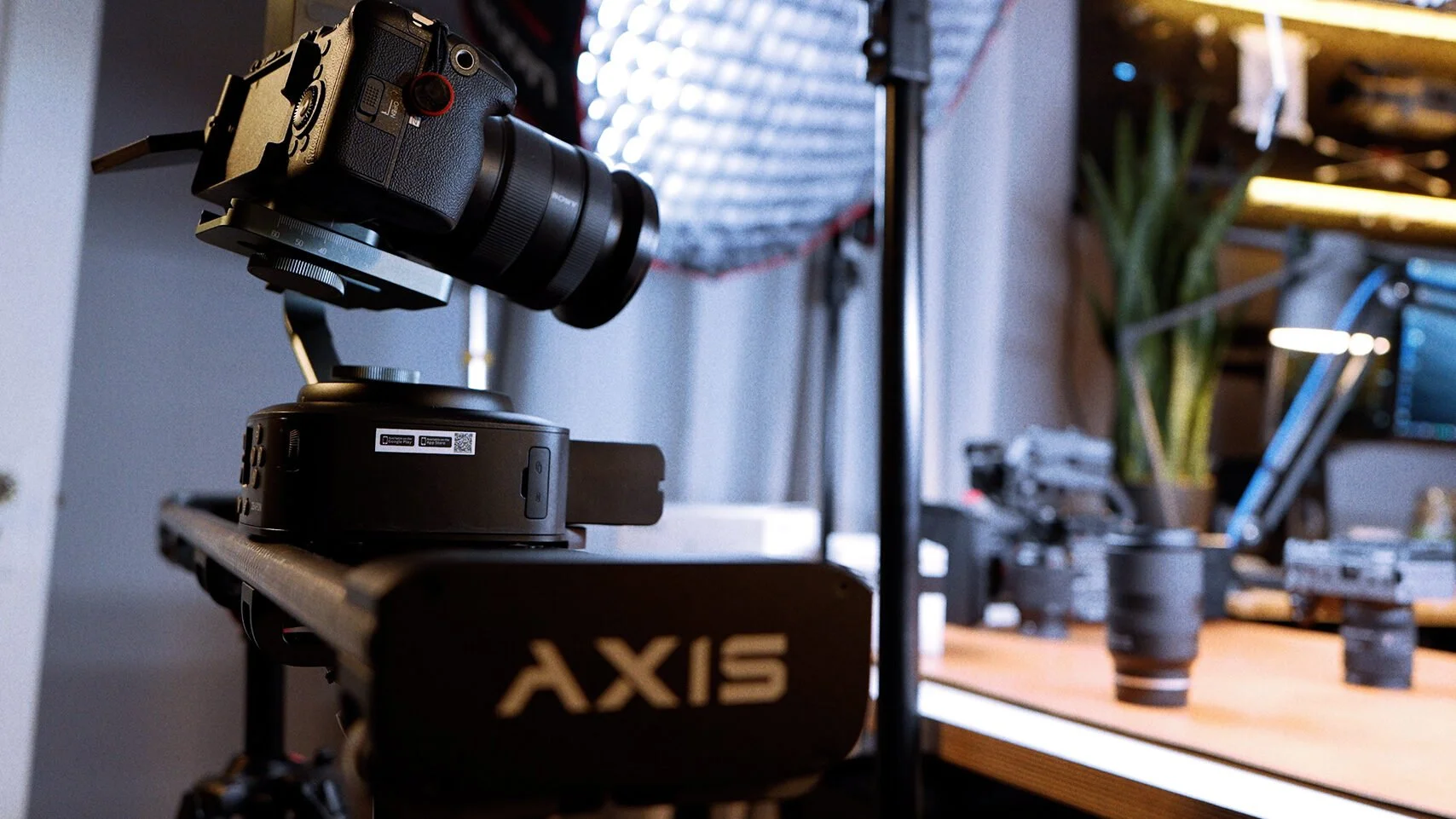Zeapon Axis 120 Pro Review | The Best Slider for $1000?
Introduction
This is the Zeapon Axis 120 Pro slider. This has 47-inch carbon fiber rails, pan and tilt head, and can be used with the controls on this slider or over Bluetooth with the iPhone app. Let’s get into some specs, tests, then I’ll tell you my opinions at the end.
Powering
Powering options for the Zeapon Axis 120 Pro are one area where I like what they did with this slider. You can power it from a USBC power bank or wall outlet or battery-operated with Sony NPF batteries. I have plenty of these lying around, so I could use them for my shoots, throw one on the charger when it dies, and have a fresh battery ready.
No internal batteries are an excellent benefit for long-term use.
Support & Tripods
For stability, the Zeapon Axis has feet you can flip out to put the slider down on a level surface, which works fine. As long as the legs are in the same position and locked, it will provide stable slides.
Most of the time, I didn’t have enough room to use the slider like this, or it wasn’t giving me the angle that I wanted, so I used tripods to support this, and after trying a few different methods, choosing the proper support is essential.
I’ve tried fixed tripods, rolling stands, and c-stands, but each had drawbacks. Until I found these smaller tripods, but they have two key features. They have a center column that can extend and an integrated bowl head so you can adjust the head of the tripod. This is the key to using any slider on uneven ground. You can easily shim the center columns to adjust the height and loosen the bowl head to adjust the tilt.
Setting up A Slide, and One Thing To Know
I mostly used this slider with A and B points, then let the slider run between the points. Let’s setup a quick slide.
First we’ll power the slider on, and clear the A and B points in the menu. Doing this each time will avoid any strange drifting in case you update an older point.
Then move the slider to the first point, press the “A” button, move to the second point, then press “B”. Sounds pretty easy, right? Well, if you want the slider to loop, press the loop button before you press play. For some reason on my slider, once you start an A to B slide, and the slider stops at B, pressing the loop button, then trying to start the slider again will sometimes cause the slider not to remember the slide points and drift off course. This seems like it can be fixed in a firmware update, but as long as you remember to press the loop button before starting the slide, everything works as intended.
Two things to know about the slides, even if using the app, there is no way to pause between waypoints, and there is no way to adjust the smoothing from the end of the slides. The slider automatically handles those.
Tests
I use a slider in a few different ways, and I wanted to test them out before bringing this on an actual shoot to see how it performs. Here are the results of my go-to slider tests.
How smooth are the macro capabilities?
First off, how smooth are the macro capabilities? You will get your usable clips from the middle of the slides with the Axis slider. For this reason, I think the longest slider is probably the best to get if you’re using this slider for macro shots. This is because the beginning and ending of the slides are jerky. The higher the speeds, the more abrupt the beginning and end of each slide.
When looping, the slider motor and pan motor catch up with each other and make the beginning and ends of the slides have a small amount of shake to them. This shake is less noticeable under 10% speed, but for product shots, I found that to be way too slow.
Can the slider repeat slides over and over?
The Zeapon Axis 120 Pro can get very close, but it struggles to get repeat shots on a loop.
This next clip will probably make you dizzy, but watch the whole thing.
Here is an overlay of three shots at the same speed. These were looping with the same camera settings, and you can see they line up for a short while in the center of the slide, however they’re just a little bit off on the beginning and ending. If you plan on doing a slide where you clone yourself and do three or four different frames, you may have to adjust your clip speed one to 5 percent in post to account for that change in speed at the beginning or end of your slide.
How smooth is the interview capabilities?
When it comes to interviews, I see two potential problems here. The first one is the noise, if the Zeapon Axis 120 Pro is close to your microphone and going faster than 15% speed, you’re likely to pick this noise up on the microphone. More on this in a bit.
The second is the shake on each end of this slider. While you can probably get away with using 5 to 10% speed for an interview with the 47” slider, there may be a few times when the slider is at the end of the rails and changing direction, and you would need to cut to another camera to hide those shakes. The slower the camera, the less noticeable the shake is at the beginning and end of the slides.
You could use this slider in the right conditions as a B or C-camera for an interview, but I would keep the speed under 5% to get the least amount of shake and noise coming from the motors.
How is the noise while sliding?
When it comes to noise with this Zeapon Axis 120 Pro, in my testing, anything over 20% speed will produce an audible noise. 1-10% speed is almost silent, 11-19% is slight noise you can hear right next to the slider, then from 20% and faster, you can hear this slider in a quiet room.
For filming an interview, I would probably set this slider to 5% anyways, but if you need fast slides with usable audio, make sure your microphone is far away from this slider.
Do You Get Better Performance Without The Tilt Head?
For the next test, I wondered if the Tilt head was responsible for some of the shakes that were had at the end of the slides. So I set up a test slide with the tilt head, a ball head, and then the camera mounted directly on the Zeapon Axis 120 Pro.
I was surprised that the tilt head didn’t affect the slide stability unless your camera was out of balance on the quick-release plate.
There is no way to tell if the Zeapon Axis 120 Pro is out of balance, so you have to guess if the slider is in balance. It’s nice the slider doesn't need to be balanced, but I wish it would tell me if something is very out of balance and needs to be adjusted.
Packing
I like the included case and the cutout foam for each part of the Zeapon Axis 120 Pro. I like the soft-sided case from a weight standpoint. I have another slider in a hard case, and it’s built like a tank, but it’s so heavy that I don’t want to bring it out for smaller shoots. With all of the padding in this case, the slider is secure while not heavy. We’ll see how this material holds up over time though.
Stability
Using one tripod and the included legs can be ok for smaller setups, like a phone, but using larger setups on any slider requires multiple tripods with a bowl head. The included supports are nice, but if your tripod isn’t rated to hold all of the weight of your camera and slider, there will be some stuttering in your footage. Using two tripods is more to set up, but the slides are much smoother in my testing, especially since this is the longer slider.
No Balancing or Tuning
An interesting part of the Zeapon Axis 120 Pro is the fact that you don’t have any balancing or tuning options. The slider takes care of all of that, butif you overload the motors, you’ll not get any notifications or alerts. The slider will just start to move in unpredictable ways, so if you’re using heavy setups or putting the center of gravity way off, you’ll get some unpredictable results. Moving your camera to a more balanced position helps this, but I would have liked to see an out-of-balance notification like gimbals have.
Manual Slider
Another point I didn’t really go over in this video was that you can unlock the motor from the belt, and use the Zeapon Axis 120 Pro manually. The whole point of this slider was to use it in an automated fashion, but if you just need a quick shot and don’t want any setup, this is a great option as well. You wont be able to free move the pan and tilt axis here though. You’ll need a separate fluid head for that to work.
Firmware Updates
This is a device where you have to make sure your firmware is updated. When I first got this Zeapon Axis 120 Pro, my A and B points wouldn’t register sometimes, but after updating the software I haven't had any issues with that happening. Only the issue when looping the A and B points, after I already started the slide. That may be a bit of user error, but that was still a little annoying to have to delete the points and redo the slide.
Setup Time
One of the best parts of this Zeapon Axis 120 Pro is the quick setup time. While there are some jitters at the ends of the slider if you’re filming macro shots, wider shots make it easier to hide the small imperfections in the slide with the Axis. If you’re traveling with this slider and breaking down and setting up in multiple locations, using your cameras in-body stabilization and maybe even warp stabilizer in post my be worth the trade off of how portable this slider is, especially for the price.
The Price
Which brings me to the price of the Zeapon Axis 120 Pro, this slider costs a little over $1,000 USD and that is a lot of money - but when comparing it to the other sliders on the market like the Rhino slider, which I also own, it’s a fraction of the price of that slider.
The Rhino Arc II, and 24 inch rails costs $2,350. My ultimate slider bundle costs $3,650.
So when you compare the price to more expensive sliders, the price of the Axis is much easier to justify.
If you’re using smaller setups, like mirrorless cameras or stripped-down cinema cameras, the Zeapon Axis 120 Pro is a great value, as long as you're ok with slides that are a little jittery at the ends, and loud noises when sliding over 15% speed.







